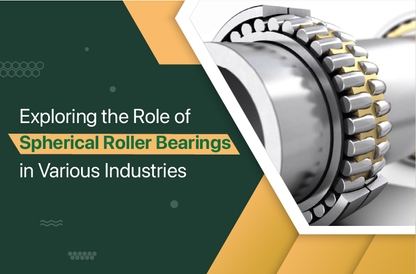The world of engineering and machinery completely depends upon various technical products, but bearings hold a special place in all. They are small components that play an important role in enabling smooth controlled motion, reducing friction, and ensuring efficient energy transfer.

Plus, not all the bearings are equal, they are distributed according to shape and size. Understanding wholesale market demand for bearing and transmission is necessary to analyze for achieving operational efficiency and minimize downtime in industrial settings.
According to reports, the world exports of the ball-bearing market exceeded $13.7 billion from US$2.81Bn. The global ball-bearing market size is estimated to grow at a CAGR of 8.32%.In this comprehensive guide, we will explore the key factors to navigate while choosing ball bearings, understand the characteristics of quality bearings, and dig into the process of researching and choosing a reputable manufacturer.
READ MORE : Choose B2B Tools and Equipment Suppliers online
Understanding about ball bearings
Before delving into the selection process, is it necessary to have a basic understanding of the principles of ball bearings, their functions, and their types.
Principles
The mechanism of ball-bearing is based on the principle of rolling motion. It reduces friction between moving parts. They contain inner and outer races, balls, and cages to maintain ball separation. Ball bearings are designed in such a way, that it allows efficient load distribution and smooth rotation.
Functionality
The movement of machinery components is benefited by ball bearings. It helps to distribute loads and reduce friction. They are generally used in various industrial applications like motors, conveyors,s and robotics.
Types of ball bearings
Different types of bearings serve different applications. Some of the common variations are ball bearings, thrust ball bearings, angular contact ball bearings, and deep groove ball bearings.
We have elaborated some more in detail:
| Type of bearings | Description |
|---|---|
| Ball bearings | They are a common type of bearing used to separate the moving parts and reduce friction. They suit applications with low to moderate loads and moderate speeds. |
| Tapered roller bearings | They are specialized rolling element bearings designed to handle both radial and axial loads, as they have their outer and inner rings tapered. |
| Plain bearing | Also known as sleeve bearings or bushings, they are bearings that operate on the principle of sliding motion more than rolling elements. |
| Cylinder roller bearing | They are a type of rolling bearing designed to provide efficient support for radial loads that allow rotational motion. |
| Spherical roller bearing | These bearings are designed to accommodate both radial and axial loads by their unique barrel-shaped rollers. |
| Self-aligning ball bearing | Self-aligning ball bearings, also known as self-aligning roller bearings, are designed to accommodate misalignment between the shaft and the housing. |
Characteristics of quality ball bearings
The optimal performance and longevity of industrial machinery are essential to note and for this, the key characteristics define the quality of ball bearings.
Material selection
The material choice significantly improves the bearing performance. The manufacturer digs the material science insights to understand how different compositions and structures influence bearing behavior.
This detailed research and testing gives them the material of choice that aligns with the specific needs of diverse industries.
Precision and tolerance
Precision is an important industrial tool and ball bearings are divided according to precision and tolerance. Precision in ball bearings directly impacts the performance of industrial tools. Higher precision bearings contribute to smooth operations, reduce vibrations, and overall improve efficiency.
Although precision is closely connected to tolerance, it indicates the allowable deviation from specified dimensions. The level of precision that a bearing possesses is assured by the ABEC rating system and ISO tolerance.
Higher AEBC signifies tiger tolerances and increased precision. While ISO is a global standard to measure bearing tolerance classes ranging from 0 to 9, the higher the number the more the precision.
Lubrication
Lubrication is necessary to reduce friction, prevent wear, and dissipate heat. Proper lubrication is important to minimize friction between bearing components which helps to extend the lifespan of bearings. The heat generated during operation is dissipated by lubrication preventing overheating and potential damage to bearings.
Plus, bearings can be lubricated with grease or oil. Grease resists contamination and reduces maintenance. It is suitable for applications with moderate speed and loads. While oil is preferred in high-speed applications and environments with higher operating temperatures. It enhances cooling and is suitable for applications that vary in speed and load. On the other hand,
The choice depends on factors such as speed, load, and operating conditions. Routine lubrication maintenance is essential to ensure optimal performance.
Seals and shields
Usually, contaminants occur in bearings, while seals and shields protect them and retain lubricants. Seals and shields protect the ball bearings from contaminants like dust, dirt, and moisture.
It usually occurs in premature wear and failure if adequacy is not addressed. However, effective seals and shields help to retain lubricants within the bearings, making them compatible for optimal performance.
There are different types and levels of protection such as contact seals, non-contact seals, and shields. The right option selected depends upon the environmental conditions bearings will face.
Contact seals are preferable in environments with heavy contaminations while non-contact seals or shields suit a cleaner environment that focuses on minimizing friction.
Examining industrial tools requirements
Checking load and speed
If the static and dynamic loads of bearings are understood, it is crucial for proper selection. Static loads are stationary while dynamic loads involve movements. These loads, when calculated, ensure bearings can handle the stresses they will encounter.
Different applications require bearings to operate at different speeds. Also, the bearings are chosen with speed capabilities that align with rotational speed, to demand specific industrial tools.
Environmental effects
The bearing's performance is affected by extreme temperatures. The operating environment's temperature range makes sure that the selected bearings combat the conditions without compromising efficiency. In an environment with dust, dirt or moisture, bearings having effective seals or shields are necessary to prevent incomplete wear or failure.
Application in a corrosive environment, makes the bearings made from material resistant to rust and corrosion. In such conditions, stainless steel or ceramic bearings are the best choice.
Verifying trusted industrial tool manufacturer
It is essential to investigate the background of quality bearing manufacturers. Companies at the enterprise level have a history of producing quality bearings, as they have experience in providing reliable products. Such industrial ball-bearing manufacturers have many years of experience in maintaining operations.
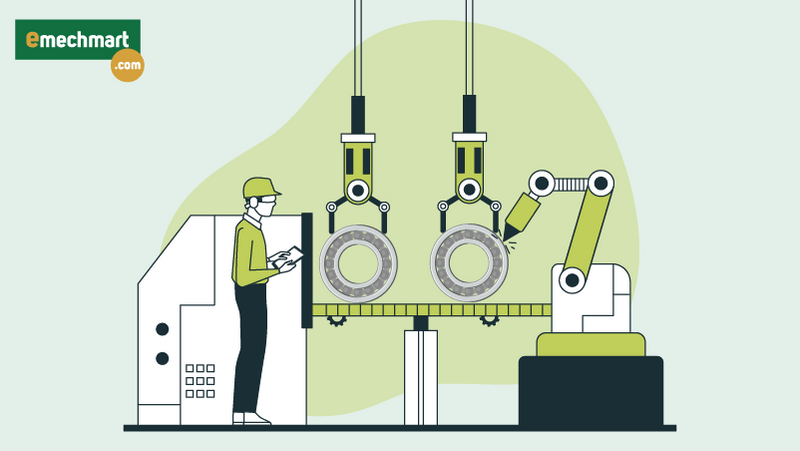
They are likely to refine their processes and earn the trust of customers. If the trusted bearing suppliers have been in the industry for many years, it's an indicator of a well-known firm. In addition, the manufacturers with accolades like industry awards, certifications, or recognitions are committed to quality and adhere to industry standards.
Certification and compliance
Manufacturers that adhere to international standards like ISO 9001 focus much on quality management systems. Complying with these standards shows a commitment to produce high-quality products.
Apart from these, many industries have specific certifications or standards. Ensure that the manufacturer meets those requirements to indicate their suitability for a particular application.
Material used
There are commonly three types of material used during the manufacturing of ball bearings:
Chrome steel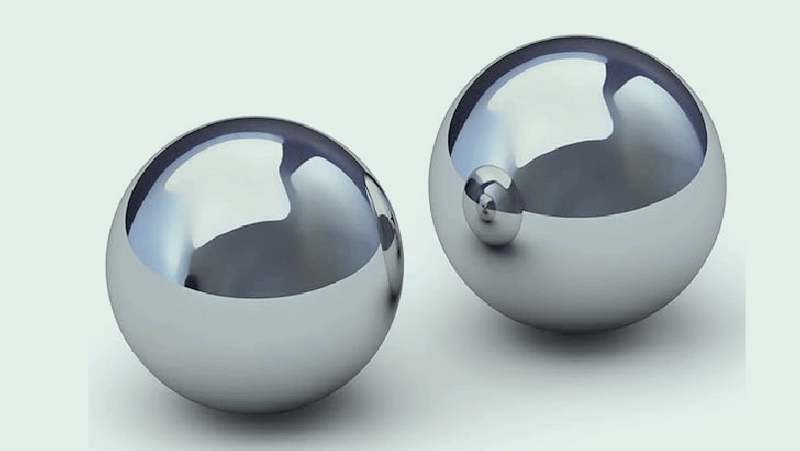
It is one of the most popular and cost-effective materials used for bearings. Plus, chrome steel provides a balance of durability, hardness, and affordability that is suitable for any kind of application.
Stainless steel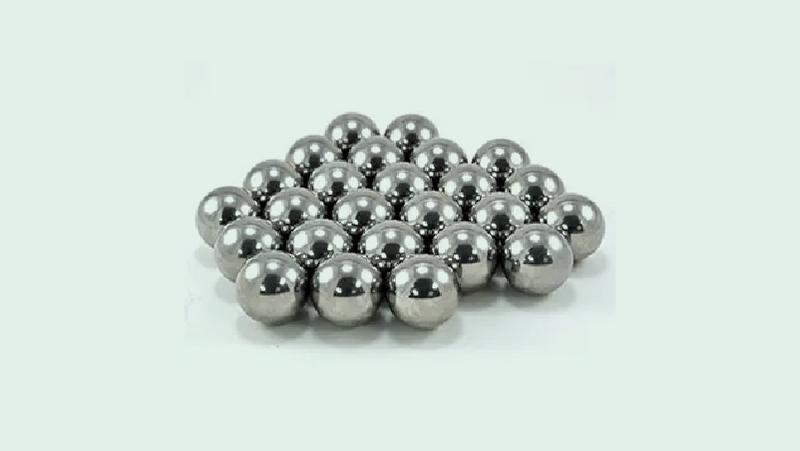
Bearings made from stainless steel offer corrosion resistance, making it ideal for applications exposed to moisture or harsh chemicals. Most commonly they are used in food or medical industries.
Ceramics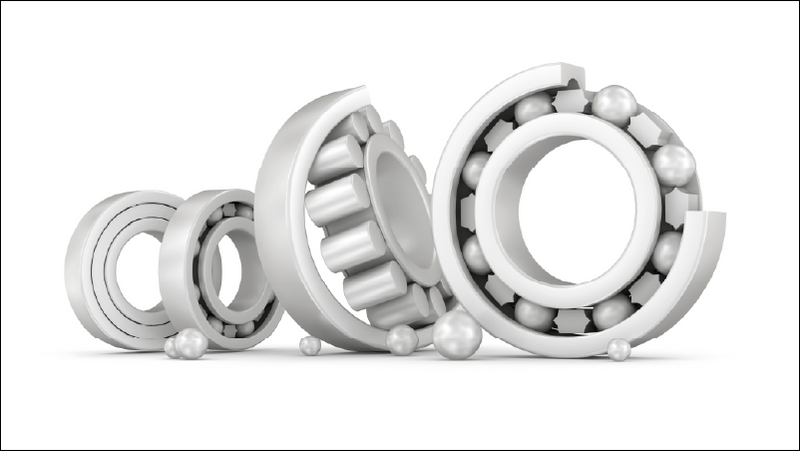
These bearings give better results in high-speed or high-temperature applications. In addition, they are lightweight to reduce friction and exhibit excellent wear resistance.
Advantages and disadvantages of material used| Type | Advantages | Disadvantages |
|---|---|---|
| Chrome steel | Cost-effective, high-hardness, and durable | Attracts to corrosion in certain environments |
| Stainless steel | Corrosion-resistant and suits hygienic-environment | High in cost compared to chrome-steel |
| Ceramics | Supports high-temperature Gives low friction Its light in weight | It is high in cost Very delicate and prone to chipp in certain conditions |
Cost considerations in choosing industrial tool manufacturers
Balancing cost and budget
As quality is all that matters, it is vital to balance the budget constraints too. Calculating a budget and understanding the total cost of ownership helps make a cost-effective decision.
This budget acts as a guiding framework, delineating the financial boundaries within where the bearings selection takes place. Although, balancing quality and budget is not about finding the lowest cost option available but involves a strategic evaluation on how the chosen ball bearings contribute to long-term cost-effectiveness.
Total cost of ownership
The initial cost of acquiring the ball bearing depends upon the factors in the quantity required for application. Evaluate the expected maintenance costs, including lubrication and potential seals and shield maintenance.
It is an obvious call that quality bearings have higher upfront costs but result in low maintenance expenses over a long period.
While downtime in an industrial setting leads to significant financial losses. Investing in high-quality bearings leads to a lower risk of failure and helps to minimize downtime and costs.
Conclusion
Choosing quality ball bearings from Trusted industrial tools manufacturers involves a detailed understanding of bearing principles, application requirements, and the reputation of manufacturers.
If factors such as material selection, precision, lubrication, seals, and cost considerations are prioritized, individuals can make informed decisions to contribute to the longevity and efficiency of industrial machinery.
Detailed research and collaboration with reputed manufacturers are essential steps to ensure the success of quality ball bearings for any industrial tool applications.
Take the next step in industrial excellence – secure your trustworthy ball bearings now!



